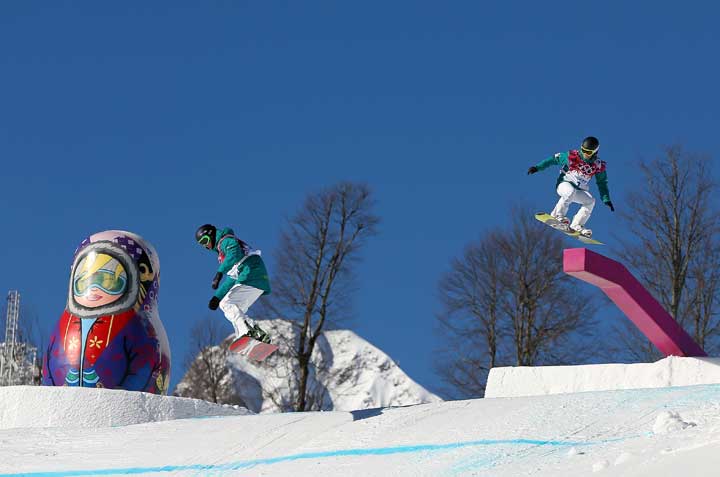KRASNAYA POLYANA, Russia – The slopestyle course that drew complaints from some riders ahead of the Sochi Olympics is set to be modified after Norwegian medal hope Torstein Horgmo broke his collarbone in practice Monday and is out of the Winter Games.

The 26-year-old Horgmo landed heavily on his face and right shoulder while attempting a difficult trick on a rail near the top of the course and was taken to the athletes’ hospital at Krasnaya Polyana, said team manager Thomas Harstad.
Medical scans confirmed a fracture.
“Injuries and falls are part of this sport, but the timing is really bad,” Horgmo said in a statement released by the Norwegian team.
Athletes had expressed concern about the steep jumps at the Rosa Khutor Extreme Park course even before the official practice began Monday, days ahead of the first qualifying runs Thursday in the men’s slopestyle.
International ski federation official Roberto Moresi, the assistant snowboard race director at Sochi, said organizers had responded to feedback from the athletes and were trimming the tops and bottoms of some jumps at the top of the course “in order to make it more smooth.”

Get daily National news
Moresi said the course wasn’t a factor in Horgmo’s crash, saying it happened because “he was just trying a really hard trick.”
Course designer Anders Forsell said the changes were minor.
“On a non-tested course, you’re always nervous, but it worked out fine,” he said of the reaction from athletes.
Riders discussed the course design at a meeting after the first practice session. Some thought some of the jumps were dangerous, others thought the course was OK.
“It looks pretty sketchy, the rails are sticky,” Roope Tonteri, the 2013 world champion in men’s slopestyle, was quoted as saying. “I think they wanted to make big kickers, and it’s not really good for riders, and it’s not really safe. I just don’t want to get injured. It’s not a really fun course to ride.”
Sebastien Toutant of Canada told the Olympic News Service, “It’s like jumping out of a building.”
Seamus O’Connor, a U.S.-born 16-year-old rider who is competing for Ireland in the snowboard halfpipe and slopestyle, told the Irish media that the course was “pretty dangerous” and urged the athletes to seek changes.
“They overbuilt the jumps because they were anticipating that the snow would melt. At the moment, the riders are not happy,” O’Connor was quoted as saying.
But U.S. rider Sage Kotsenburg compared the jumps with those at the X Games.
“It’s what we should be jumping at this level. It’s the Olympics,” he said. “They need a little bit of work. That’s how it happens. We ride, and after the first day the riders give feedback on the course. Then they work on it.”
This is hardly the first course layout to be modified after an accident during Olympic history. Organizers at the 2010 Vancouver Olympics had to modify the luge course after Georgian luger Nodar Kumaritashvili died during a training incident just before the Olympics.






Comments